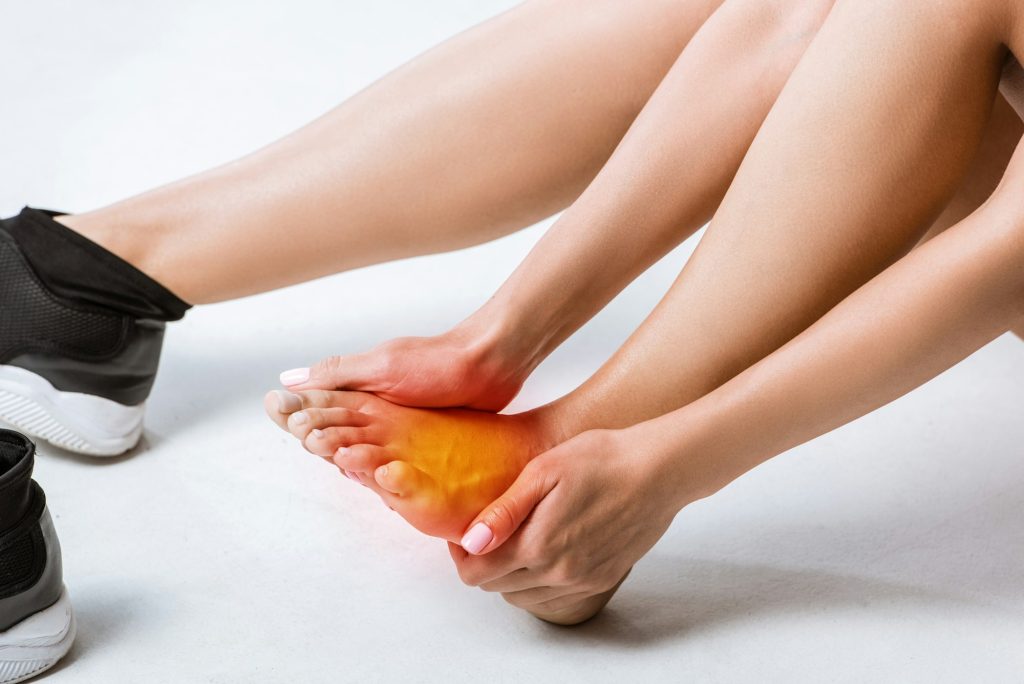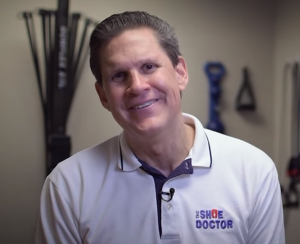Key Takeaways
- Correcting biomechanical flaws — including poor foot alignment and muscle imbalances — is critical to minimizing the risk of plantar fasciitis recurrence, since these issues impact strain on the plantar fascia.
- Regular, appropriate use of properly fitted orthotics is important, as sporadic use or changing types can reduce the efficacy and lead to continued pain.
- Lifestyle changes such as consistent stretching, weight control, and rest from extended periods of standing can do wonders in preventing heel pain from taking hold again.
- Choosing supportive shoes with good arch support and cushioning, and routinely checking for shoe fit, keeps your feet in optimal shape and minimizes the chances of a comeback.
- While custom orthotics provide better support and more specific relief than off-the-shelf inserts, their efficacy is tied not only to material quality but to periodic adjustment as the shape of your feet evolves.
- Proactive engagement with healthcare professionals and open communication about symptoms allows for a more comprehensive, personalized approach, optimizing long-term outcomes for plantar fasciitis management.
Plantar fasciitis recurrence with orthotics, which is to say that the heel pain returns despite using foot inserts designed to provide support. Research demonstrates that though orthotics can reduce pain and support recovery, some patients experience a return of symptoms after several months and even years. A lot of things can impact this, like foot shape, activity level, or how the orthotic fits. Others may require new or modified orthotics with the passage of time. Other culprits might be your weight, your daily routine, or even your footwear. To discover lasting relief, it is helpful to understand why pain returns and what actions serve best for each individual. The remainder of this post will demonstrate what the research says and provide advice for managing this beast.

Why Plantar Fasciitis Returns
Plantar fasciitis (PF) is known to creep back for many people, even those with orthotics. The vast majority go away within a year, but the pain and misery come back when you don’t address the underlying problems. Here are why PF returns, explained with an emphasis on biomechanics, orthotic use, lifestyle, support, and missed root causes.
1. Biomechanical Flaws
Bad foot alignment places additional tension on the plantar fascia, causing it to stretch and tear with every step. If you have flat feet, high arches, or an unbalanced foot structure, your plantar fascia will kick in harder. This additional pressure causes micro tears and inflammation.
A lot of folks have wonky gaits—perhaps rolling in (overpronation) or out (supination). This shifts stress onto your fascia, triggering persistent pain. Muscle imbalances contribute to the issue. Weak calf muscles or tight Achilles tendons transfer more strain to the foot. These flaws are common and can’t always be remedied by orthotics if the user ignores stretches or strengthening.
2. Orthotic Misuse
Miss your custom orthotics or don’t wear them DAILY, and the foot loses that support to heal. Alternating between orthotics of different types (for example, custom to store-bought) can do more damage than help. The foot never acclimates to one support, which can aggravate symptoms.
Fit is key. Orthotics that are too stiff, too soft, or not contoured to your arch aren’t effective. Research finds moulded footbed sandals and flipflops can assist, but only when worn appropriately. Routine visits to a podiatrist are necessary, since old or ill-fitting orthotic devices can lose their efficacy.
3. Lifestyle Factors
Daily habits are a big part. Individuals who begin an equilibrium-promoting exercise regimen, including an emphasis on foot muscle strength, reduce their risk of PF resurfacing. Weight control plays a role—a heavier body exerts more pressure on the plantar fascia, making it more susceptible to damage.
Pounding out long hours on unforgiving floors, like concrete, with no relief, makes the fascia more prone to injury again. Activity breaks and supportive shoes or insoles can do wonders. Night splints did not prove very helpful in recent studies, so your daily habits may outweigh passive support.
4. Inadequate Support
Arch support prevents the fascia from overstraining. Flat or minimally-padded shoes—such as most fashion sneakers or aged running shoes—don’t provide enough assistance. You can add supportive insoles, but they must fit correctly and be inspected regularly.
Good fit and comfort aren’t just nice-to-haves; they’re a must if you want PF to stay away.
5. Ignoring Root Causes
Orthotics assist by making those mechanical changes for you — putting the foot in a better position, distributing weight throughout the body, and absorbing shock. They additionally assist the foot to function more optimally while walking or running. If the cause of PF—such as chronic malalignment of motor recruitment patterns, old injuries, joint restrictions, or weakness of muscles — is not addressed, pain is likely to return.
How Orthotics Work
Orthotics are customized foot devices that are designed to provide foot support, assist with proper joint alignment, and alter the distribution of weight with every step. Their primary objective is to relieve tension from the plantar fascia, the dense tissue connecting your heel to your toes along your foot’s underside, which is frequently injured in plantar fasciitis. By optimizing foot alignment and function, orthotics can reduce pain, provide increased comfort to the feet, and prevent foot issues from recurring. Custom orthotics are formed to an individual’s requirements, and prefabricated ones provide generic support. Both can assist, but custom ones tend to serve better and endure longer.
Correcting Alignment
Orthotics work by distributing your body’s weight more evenly across the foot. When the weight is distributed evenly, it prevents excessive pressure from accumulating in a focal area, which is frequently the source of pain in plantar fasciitis. This distribution of weight throughout the foot keeps joints in the foot and ankle properly aligned, which alters your gait and posture.
With improved alignment, fewer pressure points can induce pain or result in inflammation. This allows the plantar fascia and other tissues to move without excessive tension. By maintaining the proper position of the foot, orthotics can stave off things such as Achilles tendinopathy or ankle sprains. This makes walking and running easier and less painful, and can prevent future injuries.
Distributing Pressure
Orthotics provide additional padding that aids in absorbing shock when your foot lands. Cushioning plays an essential role in relieving heel pain for plantar fasciitis sufferers because that’s typically where the pain originates. The padding for these devices absorbs impact and protects delicate areas of the foot. With less pounding force, the plantar fascia and surrounding muscles receive a reprieve from persistent stress.
Good shock absorption makes all the difference for athletes or anyone who spends hours on their feet. It can assist with performance and recovery. For those with chronic pain, pressure relief translates to more comfort daily. Orthotics aren’t just for plantar fasciitis–they can serve other ailments, such as adding stability to flat feet or extra support to individuals with high arches.
Absorbing Shock
Custom orthotics are manufactured for an individual’s specific foot, so they feel better and perform better than off-the-rack versions. A custom fit means that the orthotic stays put, moves with the foot, and gets right to where it hurts. The support they offer may last longer as well, as they are made from sturdier materials than their store-bought counterparts.
Custom designs can be crafted to assist with numerous foot and ankle problems—such as Achilles tendinopathy, bunions, or persistent heel pain—by providing targeted support to areas that require it. Routine appointments with a podiatrist ensure the orthotic continues working as your body adapts. These can be tweaked if you put on weight, change your activity level, or have other changes in your health.
Consulting a Specialist
Visiting a foot doctor is important for getting your feet aligned correctly. A podiatrist can help fit and adjust your orthotics. They might also suggest other treatments that work well with your orthotics.
Beyond The Orthotic
Orthotics are just one piece of the plantar fasciitis puzzle. A lot of people continue to hurt or get symptoms return with orthotic support. A long-term solution relies on more than just inserts—it encompasses shoes, stretching, weight, and activity habits. All contribute, therefore, a more holistic approach is necessary to prevent plantar fasciitis from returning or worsening.
Proper Footwear
Selecting the appropriate shoes is paramount. Shoes with good arch support and good cushioning both distribute weight and reduce the tension in the plantar fascia. Shoes should be specific to the foot’s particular shape—high-arched people require different support than those with flat feet. Bad shoe choices, such as flip-flops, thin sandals, or old sneakers, can sabotage you, even if you wear orthotics. For patients, periodic checking of the shoe’s condition and fit ensures that support doesn’t wane with time. Orthotic sandals can bridge the void, particularly when regular shoes are off-limits, like at home. Orthotic sandals and prefabricated orthotics together have been demonstrated to soothe symptoms more than orthotics alone, providing relief around the clock.
Stretching Routines
These particular stretches stretch the calf muscles and the plantar fascia tissue, which helps relieve tightness and pain. Easy maneuvers, such as standing calf or towel stretches for the sole, can be executed in your living room with zero equipment. Daily stretching keeps the foot supple, reducing the chance of microtears and pain flare-ups. It’s clever to incorporate stretching into your daily habits upon waking, pre-activity, or following an extended sedentary session. Stretchers experience less tightness and more comfort, enabling them to navigate their over-scheduled days with less discomfort.
Weight Management
More body weight=more pressure on your feet, which can aggravate plantar fasciitis or prolong its duration. Maintaining a healthy weight reduces stress on the plantar fascia and promotes foot health. A combination of nutritional tweaks and consistent activity will control the pounds. Even minor tweaks—such as introducing more whole grains, fruits, or vegetables, or monitoring with a health app—can create a long-term impact. They tend to have less painful feet and heal up quicker, according to the folks who live there.
Activity Modification
Certain activities, such as long walks on hard surfaces or high-impact sports, can trigger plantar fasciitis. It helps to shake up these habits, substitute in low-impact alternatives such as swimming or cycling, or take consistent breaks to relax the feet. Cross-training maintains your fitness while diffusing stress across different muscle groups. Low-impact exercise encourages good health, without overloading the plantar fascia – it’s a safer bet for the recurrent pain crowd.
Staying Consistent with Orthotic Use
It’s most beneficial to wear orthotics all the time. Missing them, even briefly, can bring back pain. Orthotics wear out over time—keep an eye out for changes in shape or diminished support, and swap them out accordingly. Listen to your body — pain, soreness, or swelling are indicators to modify your plan or consult a health provider. Remaining active and engaged in your recovery typically yields improved outcomes and less regression.
Your Role in Long-Term Relief
The patient plays a significant role in preventing plantar fasciitis from returning, even with orthotics. Each stride, from donning orthotics day after day to comparing aches and selecting the right shoes, contributes to forming how effective a treatment plan is. Daily practice is what separates consistent advancement from slipping back. Skipping days or using orthotics only when it hurts can allow the symptoms to creep back in. Easy habits, such as placing reminders or leaving orthotics by the door, facilitate more consistent wear.
Consistent Use
Inspecting orthotics for wear isn’t just for the pros—patients should be trained to identify worn thin spots, cracks, or lost shape. These shifts might be minor, but they can indicate that the unit isn’t providing adequate assistance.
Don’t wait until pain returns. Old/worn orthotics lose their magic. Well visits help snag these early. If the base sags too much or the heel cup softens, it’s time for a new pair. Feet are dependent on new, good-fitting support. Waiting too long translates into greater pain and the risk of additional foot issues.
Recognizing Wear
Pain is a warning, not merely an annoyance. If a patient experiences greater soreness in the heel or arch, it may indicate that the orthotics are breaking down. Recognizing minor shifts in ease can prevent major regressions.
Modifying orthotic wear based on symptoms is clever. It’s not about adherence to a mandate but response to the body. Patients should not hide these transformations. Open conversations with clinicians lead to quicker answers and increased ease. Self-awareness, constructed by tuning in closely to pain and comfort, really matters to plantar fasciitis management.
Listening to Your Body
A robust plantar fasciitis plan doesn’t end with orthotics. It should contain stretches, strength moves, and perhaps other therapies. These pieces function more effectively in concert. Working with a provider helps tailor the blend for each individual.
Symptom tracking in a pain diary identifies trends and detects what is effective. This facilitates sharing rock-hard facts with a doctor and helps adjust the plan. Honest feedback informs the provider whether the treatment is on track or requires adjustment.
Patient Engagement
Simple things help: put orthotics where they are easy to grab. Use phone reminders to recall them. Make inquiries and find out about alternatives.
TELL YOUR PROVIDER IF SOMETHING FEELS WRONG. Discuss your life or work changes. Stay on top of daily moves and habits.
Wear the right shoes. Stay active. Each step counts.
Optimizing Your Treatment
Managing plantar fasciitis recurrence requires more than just placing an orthotic in your shoe—it takes a full-body, long-term approach. Everyone’s path to recovery is different, but blending supportive habits with medical guidance greatly improves the odds of staying pain-free.
- Invest in custom orthotics tailored to your foot’s mechanics. Unlike store-bought insoles, they hold their form for years and offer durable, targeted support.
- Ease into wearing them by starting with 4–6 hours a day, increasing gradually over 3–4 weeks. This slow transition minimizes blisters or discomfort.
- Wear them consistently for at least 3–6 months, unless your provider advises otherwise. Some may need to continue long-term to prevent flare-ups.
- Pair orthotics with physical therapy to stretch and strengthen your calves and feet. This addresses the muscular imbalances and tension that contribute to plantar fasciitis.
- Do focused exercises and stretches, especially for the calf and plantar fascia. Strength routines and mobility work support your recovery.
- Use ice therapy (7–10 minutes, three times daily) during flare-ups to reduce inflammation and soothe acute pain.
- Identify and correct root causes like tight calves, worn shoes, poor gait mechanics, or long hours on hard floors. Prevention starts with awareness.
- Regularly evaluate your environment and footwear, whether at home or work, to reduce strain on your feet.
- Stay informed by learning more about plantar fasciitis and asking questions at appointments. Knowledge empowers early action and smarter decisions.
When you use orthotics along with therapy and stay mindful every day, you’re not just relieving pain—you’re building a long-term fix that helps prevent plantar fasciitis from returning.
Conclusion
Orthotics provide firm heel support and can reduce pain from plantar fasciitis. The ache can return if you ignore other important measures. Stiff calf muscles or shoes, or heavy sport loads often trigger a new flare. Personalized footbeds are a better foot fit than mousse pads, but they require maintenance and quality footwear. Your daily habits are just as important as the tools. Stretching, a slow ramp-up in sport, and rest help a lot. Every foot heals differently. So stay on course, consult your care team, and monitor what satisfies your body. Want to prevent your pain from returning? Tell others about your wins and tips, and join the conversation in our blog.
Frequently Asked Questions
1. Can plantar fasciitis return even with orthotics?
Yes, plantar fasciitis can recur with orthotics. Orthotics do help support your feet, but other issues, such as weight, activity, and poor shoes, cause it to come back.
2. How do orthotics help with plantar fasciitis?
Orthotics offer support and cushioning to alleviate strain on the plantar fascia. This reduces discomfort and stops additional damage to your feet.
3. Are custom orthotics better than generic inserts for plantar fasciitis?
Custom orthotics are built around your foot shape and requirements. They typically offer greater support and comfort than over-the-counter inserts, but price and quality differ.
4. What else should I do besides using orthotics?
Mix orthotics with stretching, strengthening, and appropriate footwear. Keeping weight in check and refraining from high-impact activities will reduce recurrence.
5. Can lifestyle habits affect plantar fasciitis recurrence?
Yes, habits such as standing for long periods, wearing unsupportive shoes, or any abrupt increase in activity can make plantar fasciitis return.
6. How can I optimize my plantar fasciitis treatment?
Listen to your doc, use orthotics as recommended, stretch, and wear supportive shoes. Watch for symptoms and get assistance if pain reappears.
7. Is patient involvement important in preventing recurrence?
Yes, your role is key. Routine stretching, sticking to treatment plans, and living healthfully are what result in long-term relief from plantar fasciitis.
Struggling With Plantar Fasciitis? Find Real Relief With Custom Orthotics From The Shoe Doctor
If you’re dealing with sharp heel pain or stiffness when you take your first steps in the morning, you may be suffering from plantar fasciitis—a common condition caused by strain on the ligament that supports your arch. At The Shoe Doctor, our custom orthotics are designed to reduce that strain, relieve pressure, and help you walk comfortably again.
With over 20 years of experience, Russell uses advanced 3D foot-mapping technology to create orthotics tailored to your exact foot shape and movement. These orthotics don’t just cushion your heel—they correct alignment, support your arch, and help prevent the condition from coming back. Through our partnership with the Spine & Injury Medical Center in San Jose, we also ensure your whole body mechanics are taken into account for lasting relief.
If you’re in the South Bay Area, schedule your free consultation today. Let The Shoe Doctor help you walk pain-free and reclaim your day—starting from the ground up.
Disclaimer
The materials available on this website are for informational and entertainment purposes only and are not intended to provide medical advice. You should contact your doctor for advice concerning any particular issue or problem. You should not act or refrain from acting based on any content included in this site without seeking medical or other professional advice. The information presented on this website may not reflect the most current medical developments. No action should be taken in reliance on the information contained on this website, and we disclaim all liability for actions taken or not taken based on any or all of the contents of this site to the fullest extent permitted by law.


